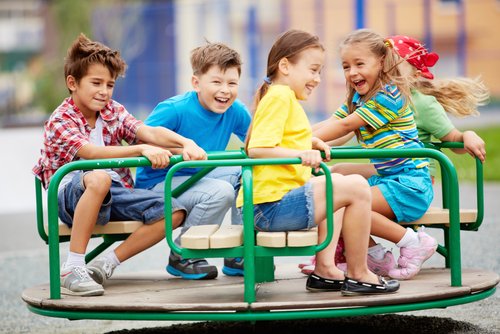Playgrounds are a great place for kids to be active and develop many important physical, social and cognitive skills. However, playground injuries can be serious. Kids can avoid most playground injuries by following safety rules, including not pushing or roughhousing while on jungle gyms, slides, seesaws and swings. They should slide feet-first and always jump off equipment with their knees slightly bent.
Safety Surfaces
The most important component of a 안전놀이터 is the surface underneath equipment. Most injuries on playgrounds occur when kids fall from the equipment to the ground. The right surface can cushion the impact and dampen the fall, protecting kids’ heads and bones. Surface materials such as sand, engineered wood fiber, rubber mulch, pea gravel and grass should be placed at least 6 feet under and around equipment to provide adequate head protection. Concrete, asphalt and dirt should never be used because they do not offer enough padding to prevent injury.
The best option for playground surfacing is poured rubber, which offers great accessibility and impact attenuation. It also lasts for years and requires little maintenance. Other options include engineered wood fiber, rubber tiles and PIP (polyvinyl chloride) surfacing. Look for a safety surface certified by CSA International or TUV SUD America to ensure it meets national and international standards. This is a good way to keep your playground up to date and reduce costs over time.
Supervision
Supervision is an important part of any playground. It’s impossible for adults to be everywhere at once, but teaching kids basic safety principles helps limit the chance of an accident. For example, telling kids to wait their turn on equipment can prevent them from running down a slide before someone else has cleared the top. In addition, school staff should be trained to spot potential injuries and follow protocols for responding to them. For example, if a child falls and appears to have hit their head, it’s important to leave them lying on the ground until additional personnel arrives—trying to move the injured child could cause further damage.
It’s also important to take into account any obstructions that might make it difficult for staff to see all areas of the playground at once. This may mean adding another surveillance zone if there are any blind spots on the playground. Also, it’s a good idea to create an injury and emergency protocol cheat sheet that all supervisors can carry with them so they’re ready to respond quickly to any situation that might arise.
Age-Appropriate Equipment
Kids of all ages have different physical capabilities, and their play needs evolve over time. That’s why playground equipment is designed for specific age groups based on their physical and cognitive development. For example, toddler playgrounds have smaller equipment with lower fall height requirements so children can climb step ladders, stairways and slides without hurting themselves. Toddlers are also a bit “top heavy” and don’t have great balance, so requiring them to use handrails on equipment like balance beams can help protect them from injuries.
For school-age children, a well-designed playground will offer exciting challenges that encourage social interaction and cognitive learning. These features can include activities that require fine motor skills, like knobs to pull or wheels to turn, as well as climbing walls and tumbling tubes. It’s also important to ensure that all equipment meets Americans with Disabilities Act (ADA) requirements for accessibility.
Safety Checks
Keeping up with routine maintenance is essential to ensure playground safety. It is also important to be on the lookout for things that may need immediate attention. This includes tripping hazards, broken equipment and loose surfacing. Bumps, bruises and scraped shins are part of kids’ creative play, but it is possible to eliminate more serious injuries with proper maintenance. Check to make sure that the protective surfacing around all equipment is still at least 12 inches deep, and that it extends at least 6 feet in all directions from equipment. Make sure spaces that could trap children — like openings in guardrails or between ladder rungs — are no more than 3.5 inches and less than 9 inches wide.
A thorough inspection program is vital for safety in a playground, and it is important that this programme be carried out by someone not involved with the management or operation of the playground. Routine inspections should be performed on a regular basis, particularly at times of higher usage, and they should include an examination for vandalism, minor wear, long-term structural problems, changes in standards compliance or design practice and risk assessment.
Wrapping It Up
Playgrounds offer kids fresh air, friends, and fun. But faulty equipment and unsafe behavior can cause injuries. Each year more than 200,000 children are treated in hospital emergency rooms for playground-related injuries. Checking a few simple safety points can help keep your kids safe while playing outdoors.
